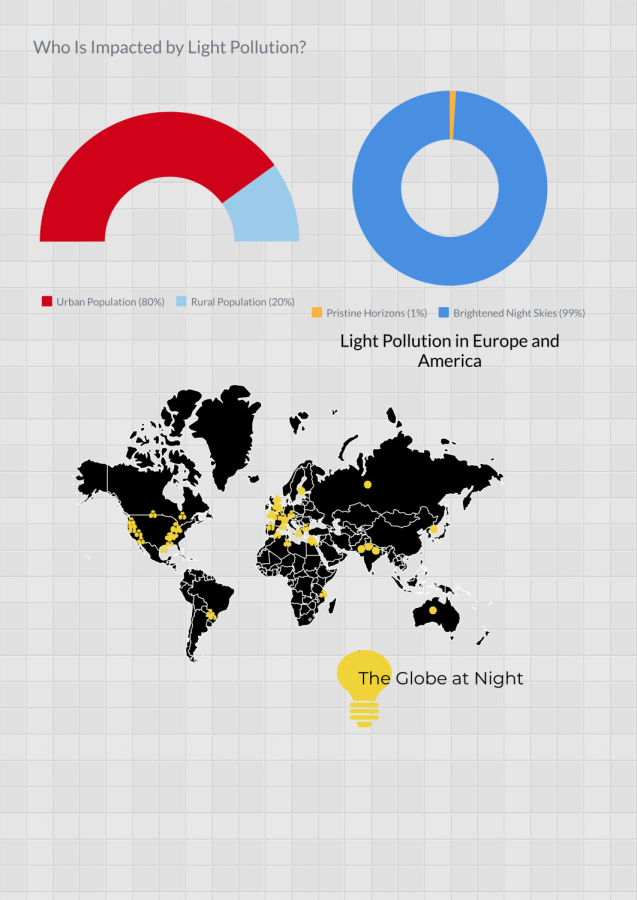When the Sky Blinks Out
After Dark … The culprit? Light pollution.
Light pollution is no longer an isolated incident.
Based on an average cycle of dusk to dawn in urban America, school-age children will live out their education, careers, and old age oblivious to the barrier between themselves and the horizon, none the wiser about the cosmic masterpiece playing out overhead.
As far as scientists know currently, there are four distinct types of light pollution: skyglow, glare, light trespass, and clutter. According to the International Dark-Sky Association, 80% of the world’s population lives with the interference of skyglow or the almost imperceptible brightening of the horizon with sustained light trespassing, visual light clutter, and glare. Plus light pollution is particularly rampant in the United States and Europe, in which an average 99% of the population lives under the pall of sky pollution.
Over the past few decades, the fantastic invention of the lightbulb has been overused to a damaging extreme at nightime. Light pollution has negatively impacted many aspects of light on earth, including the environment. Certain nocturnal animals are often thrown for a loop by the unnatural levels of light. For instance, just beyond city limits, marshes that would normally abound with croaking have since grown silent as the normal reproductive cycle of amphibians depends upon the ebb and flow of daylight.
More high-profile cases, like that of sea turtles, further demonstrate the ecological threat of nightly illumination. After baby turtles emerge from their shells on the beach, the interfering glow of human populations will lead them farther inland, instead of towards the sea. Whereas most creatures are guided by the moon at night, the disruption of the night’s pattern has complicated the relationship of both predators who begin the hunt after sunset and prey who cloak themselves in the darkness.
An instinctual objection to less nighttime city lighting is the concern that unlawful activities are spurred on by the cover of the night. Counterintuitively, though, as much as darkness may conceal the aftermath of a crime, the same dimming renders targets of crimes harder to locate.
In some cases, excess glare from streetlight handicaps pedestrians and, ultimately, leaves them more vulnerable than before. Theoretically, the interfering shafts of light can induce visual discomfort or headaches. As a practice, the human eye’s pupil dilates in shaded settings in order to take in as much of the subdued illumination as possible. When transitioning from a brightly lit area to a darkened corner then, one’s vision takes time to adjust as the pupil switches from pinprick form to the better suited dilated state.
The Center for Disease and Control (CDC), in documenting the effect of night lighting on sleep habits, has also discovered that dazzling room fixtures or bright outdoor lighting tends to delay drowsiness at least two hours past one’s usual bedtime.
Typically the human sleep cycle is regulated when hormones such as melatonin spike in response to decreased levels of photons, the particle of light. As a result, release of melatonin begins around dusk and peaks around midnight. When interior lighting does not synchronize with the dimming of daylight outdoors, other related biological processes like a reduction in appetite become erratic, correlating with a rise in obesity.
However, any person can make a difference. Using recessed lighting or ground-level walkway light bulbs serves to direct illumination exactly where one needs it. Overall, light in warm colors is less disruptive to the human circadian rhythm, so it is well suited for streetlights or interior lights during the night time. Plus since light emitting diodes (LED) light bulbs clutter the atmosphere with long-lasting wavelengths, more subdued outdoor lighting choices are better for everyone involved.




